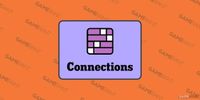On April 3, 2025, puzzle enthusiasts are once again challenged by the New York Times Connections puzzle, a game known for its clever wordplay and tricky categories. This latest edition, puzzle #662, features a mix of words that might seem to fit together but could easily lead solvers astray. With a total of sixteen words to sort through, players must navigate the three-strike rule that adds an extra layer of difficulty.
The words included in today's puzzle are: Scanner, Browser, Poster, Reader, Notice, Beach, Register, Folder, Sunday, Bulletin, Scale, Tree, Soda Can, Conveyor Belt, Keyboard, and Announcement. Each word belongs to one of several categories that players must identify. As the game unfolds, it becomes clear that some words may appear to belong together at first glance, but only careful consideration will reveal their true connections.
For those who might feel overwhelmed by the challenge, the New York Times provides a wealth of hints and tips to guide solvers through the puzzle. Whether you need a gentle nudge or a comprehensive spoiler, the available resources can help players emerge victorious. The article emphasizes that even the most experienced solvers can find themselves stumped by the puzzle’s deceptive nature.
In addition to the Connections puzzle, today's New York Times crossword, crafted by Hanh Huynh, offers its own unique challenges. This specific crossword is a rebus puzzle, allowing solvers to enter either an asterisk () or the word STAR in the designated theme squares. This dual entry method adds a fascinating twist, as solvers must adapt their strategies to accommodate the rebus format.
In total, there are six squares within the crossword where either an asterisk or the word STAR can be entered. The Across answers utilize the rebus STAR, as exemplified by the clue for 17A, which refers to THE (STAR)RY NIGHT. Conversely, the Down answers require the asterisk, with 13D featuring QBERT, which intersects with the Across answer at 17A.
The clever theme of the crossword is encapsulated by the revealer clue at 62A, which reveals that the answers are STAR-CROSSED. This theme resonates throughout the puzzle, as solvers navigate various clues that play on the concept of stars and their intersections.
Among the tricky clues presented, 9A asks, "One sharing the credits?" leading to the answer CO-[*], or CO-[STAR]. This kind of playful clue showcases Huynh's skill at engaging solvers with witty wordplay. Another example is 24A, which substitutes for the phrase "Er ... well... gee ..." with the answer UMM. Each clue invites solvers to think creatively and consider multiple interpretations.
As solvers progress through the puzzle, they encounter more challenging clues. For instance, 26A hints at the answer PAREN, short for parenthesis, which serves as a lead-in to many side thoughts, informally speaking. The clue at 27A, simply stated as PIER, might seem straightforward, but it requires careful consideration of the surrounding entries to ensure accuracy.
Another clue, 28A, poses the question of whether the word "stop" refers to a noun or a verb. This distinction is crucial for arriving at the correct answer, RE(STAR)EA, or REST AREA. Such nuances are what make the crossword both challenging and rewarding.
Additionally, 34A presents the clue for hounds with fine, silky hair, leading to the answer AFGHANS. This clue highlights Huynh's ability to incorporate various topics into the puzzle, keeping it fresh and engaging. The crossword also includes culinary references, such as 67A, which relates to SAUTÉ, a cooking method that many readers can relate to.
As solvers delve deeper, they encounter clues that require knowledge of alphabets and symbols. For example, 70A refers to the Greek alphabet, where number 23 is PSI. This clue showcases the diverse range of knowledge that crossword enthusiasts must possess to conquer the puzzle.
In a light-hearted moment, 10D presents the clue for "prongs," which might lead some to think of a fork. However, the correct answer is OUTLET, referring to the prongs on a plug. Such playful misdirection is a hallmark of crossword puzzles, keeping solvers on their toes.
Finally, 29D features the clue for a young newt, with the answer EFT, a term that some solvers may recognize as part of the crosswordese lexicon. This specialized language, filled with lesser-known words, is often a source of both frustration and delight for crossword aficionados.
As the puzzle nears its conclusion, 33D challenges solvers with the clue for Andy's toy sibling, leading to the answer ANN. This clue cleverly references the world of toys, specifically hinting at Raggedy Andy and his sister. The puzzle also includes 47D, which refers to the corner piece of a chessboard, known as a CASTLE or rook, adding another layer of complexity to the solving experience.
In summary, the New York Times Connections puzzle and the Thursday crossword both offer unique challenges for solvers, blending clever wordplay with engaging themes. Whether players are tackling the sixteen words of the Connections puzzle or navigating the rebus format of the crossword, the thrill of the game lies in the satisfaction of finally cracking the code. For those looking to sharpen their skills, the New York Times provides ample resources to assist solvers on their journey.





